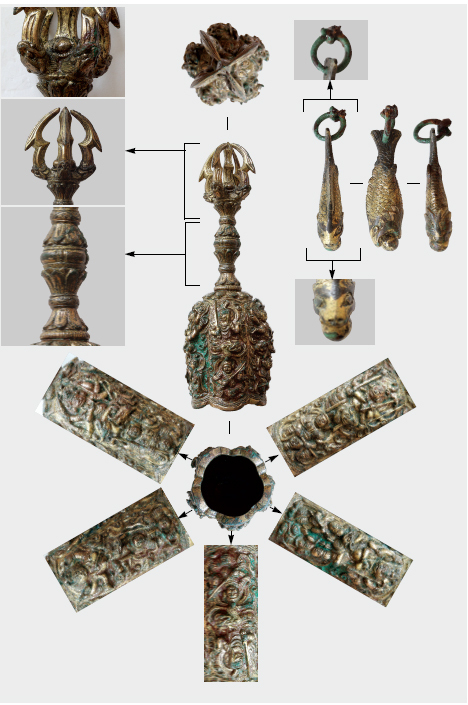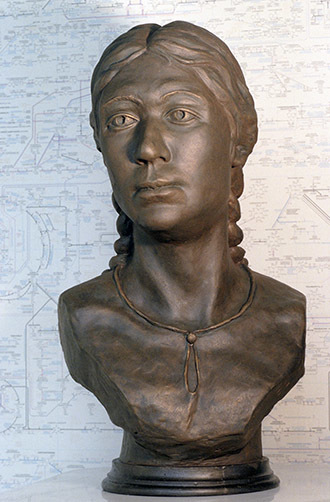![Dunhuang-Manuscripts]()
Or. 8210/S. 6983, a Chinese manuscript booklet of chapter 25 of the Lotus Sutra, held in the British Library
Co-sponsored by:Princeton University Buddhist Studies Workshop, International Liaison Committee for Dunhuang Studies, with Major Funding from The Henry Luce Foundation
Co-organizers: Stephen F. Teiser (Princeton Univ.), TAKATA Tokio (Kyoto Univ.)
The roughly 60,000 texts uncovered in the Mogao Caves at Dunhuang (Gansu Province, northwestern China) in the year 1900 constitute one of the greatest historical discoveries of the modern age. Most are handwritten on paper, although the corpus also includes the world’s oldest dated printed text, a copy of the Diamond Sutra produced by xylography in 868. Most of the texts are Buddhist scriptures written in Chinese or Tibetan, but a wide range of languages from the ancient Silk Road are also represented, including Uyghur, Sanskrit, Sogdian, Khotanese, and Hebrew. In addition to Buddhist canonical texts the hoard includes liturgies, early Chan (Zen) compositions, Daoist scriptures, Nestorian texts, Manichaean hymns, vernacular poems, Chinese classics, performance literature, schoolbook primers, writing exercises, census registers, local government documents, divorce decrees, loan agreements, and wills.
The conference features research in all disciplines of Dunhuang manuscript studies, including religious studies, literature, history, linguistics, and paleography. 29 papers will be presented by scholars involved in the International Liaison Committee for Dunhuang Studies from greater China, Japan, Europe, and the US.
Two keynote addresses (by FANG Guangchang, Shanghai Normal University, and Susan Whitfield, International Dunhuang Project) are also planned, one on Saturday, Sept. 6 at 9:00 am, and one on Monday, Sept. 8, at 4:30 pm, the latter followed by a public reception.
The languages of the conference will be Chinese and English, and papers will be written in either language. Brief abstracts will be available in both Chinese and English. At the conference, simultaneous interpretation/translation will not be provided, but local students will assist in discussion.
(Draft) Program
日程安排(稿)
International Conference at Princeton University, September 6-8, 2014
Theme: Prospects for the Study of Dunhuang Manuscripts: The Next 20 Years
普林斯頓大學學術國際研討會, 2014 年9月6-8日
主題: 展望未來20年的敦煌寫本學
Co-sponsors: Princeton University Buddhist Studies Workshop
International Liaison Committee for Dunhuang Studies
Major Funding from the Henry Luce Foundation
會議聯合主辦者: 普林斯頓大學佛學研討班
敦煌學國際聯絡委員會
路思基金會
Co-organizers: Stephen F. Teiser (Princeton University), Takata Tokio (Kyoto University)
會議組織者: 太史文 (普林斯頓大學), 高田時雄 (京都大學)
Panels and lectures held in Jones Hall 202, unless noted otherwise. All panels and lectures are free and open to the public.
會議和分組討論的地點: Jones Hall, 202室. 如安排在不同的地點, 請注意會議的具體提示. 所有的發言和討論組是公開免費的.
The languages of the conference are Chinese and English. Papers and discussion will take place in either Chinese or English. Brief bilingual abstracts will be distributed at the conference, but simultaneous interpretation/translation will not be provided. In the program below, the language used in presenting each paper is listed first.
本次會議的工作語言是漢語和英語. 論文和討論使用中文或英文.會議期間將有發言的雙語摘要,可是不會設置同聲傳譯.在以下的日程安排裏, 每篇發言所使用的語言即雙語篇名中首先列出的語言.
Advance registration before September 1, 2014, is required at the conference website:
* Indicates meals provided for pre-registered participants.
*表示向註冊的參加者提供餐飲.
Due to space limitations, the Rare Books Excursion on September 8 is limited to foreign speakers not residing in the US.
由於空間的局限, 9 月 8 日的善本書的參觀僅限於來自美國以外的發言人.
Friday, September 5 (9 月 5 日)
Afternoon Arrival and Hotel registration. 下午: 賓客抵達, 賓館登記入注
7:00-8:30 pm Dinner.Nassau Inn, Conference Room.晚餐
Saturday, September 6 (9 月 6 日)
8:00-8:50 Breakfast* and Registration. Jones 203早餐, 會議注冊
9:00-9:30 Welcoming Remarks. 歡迎致辭.
Stephen F. Teiser (Princeton University), 高田時雄 (京都大學), Wei Wu (Princeton University)
9:30-10:30 Opening Keynote Lecture. 大會發言
主持人: 郝春文 (首都師範大學). Moderator: Hao Chunwen (Capital Normal University)
方廣錩 (上海師範大學), 敦煌遺書數字化的現狀, 基本思路, 目前實踐及設想. Fang Guangchang (Shanghai Normal University), The Status, Basic Concepts, Current Practice and Plan of the Digitization of Dunhuang Manuscripts
10:45-12:15 Panel 1: Religious Interchange. 第一組: 宗教互動
Moderator: Victor H. Mair (University of Pennsylvania).主持人: 梅維恆 (賓夕法尼亞大學)
Individual papers: 20 min. Individual discussion: 5 min. Concluding discussion: 15 min.
發言時間: 二十分鐘. 論文討論: 五分鐘. 集中討論: 十五分鐘
Huaiyu Chen (Arizona State University), The Benji jing and the Anle jing: Reflections on Two Daoist and Christian Manuscripts from Turfan and Dunhuang. 陳懷宇 (亞利桑那州立大學),《本際經》與《安樂經》: 略論兩種西域出土文獻之聯係
汪娟(台灣銘傳大學), 敦煌景教文獻對佛教儀文的吸收與轉化. Wang Chuan (Taiwan Ming Chuan University), 0n some Dunhuang Nestorian manuscripts bearing certain resemblances to the type of Buddhist rituals
杨秀清(中国敦煌研究院), 道教的大众化与唐宋时期敦煌大众的道教思想——以敦煌文献中为心的研究 . Yang Xiuqing (China Dunhuang Research Academy), The Popularization of Daoism and the Daoist Thoughts of the Publics in Dunhuang during the T’ang-Song Period——A Dunhuang-Manuscripts-centered Study
12:15 Group Photograph. 會議代表集體合影
12:30-2:00 Lunch*. Frist Multi-Purpose Room A. 午餐
2:00-4:00 Panel 2: Education, Literacy. 第二組: 教育, 讀寫
Moderator: Valerie Hansen (Yale University). 主持人: 韓森 (耶魯大學)
Individual papers: 20 min. Individual discussion: 5 min. Concluding discussion: 20 min.
發言時間: 二十分鐘. 論文討論: 五分鐘. 集中討論: 二十分鐘
Rebecca Shuang Fu (University of Pennsylvania), Writing via Scribes, Signing with Marks: A Study of the Literacy Practices of Commoners in Medieval Turfan and Dunhuang. 傅爽 (賓夕法尼亞賓州大學), 以人代筆、以符為名:中古時期吐魯番和敦煌的平民讀寫實踐管窺
Imre Galambos (University of Cambridge), A Chinese primer beyond the frontier: Medieval copies of the Mengqiu. 高奕睿 (劍橋大學), 作為唐宋寫本與刻本的《蒙求》
Irina POPOVA (Institute of Oriental Manuscripts, Russian Academy of Sciences), A Fragment of Political Treatise in Dunhuang School Manual. 波波娃 (俄羅斯藏科學院東方文獻研究所), 敦煌教育文獻中的政論殘片
游自勇 (首都师范大学), 敦煌写本S.2078V“史大奈碑”习字之研究. You Ziyong (Capital Normal University), A Study of the Student Writing Practice “Stele for Shi Danai” on Dunhuang Manuscript S.2078v
4:30-6:00 Panel 3: Tantra. 第三組: 密教
Moderator: Stephen F. Teiser (Princeton University). 主持人: 太史文 (普林斯頓大學)
Individual papers: 20 min. Individual discussion: 5 min. Concluding discussion: 15 min.
發言時間: 二十分鐘. 論文討論: 五分鐘. 集中討論: 十五分鐘
鄭阿財 (南華大學), 《佛頂心大陀羅尼經》在漢字文化圈的傳布. Cheng A-tsai (Nan Hua University), The Spread of the Sūtra of Great Dhāraṇī of the Uṣṇīṣa-cittā in the Sinosphere
Amanda Goodman (University of Toronto), Codicological Considerations in the Dating of the Dunhuang Manuscript Copies of the Tanfa yize. 葛玫 (加拿大多伦多大学), 從手稿學的角度考量敦煌遗書中《壇法儀則》曆史年代的測定
Zhaohua Yang (Columbia University), Skull Rituals in Dunhuang: Reconsidering Tantric Transgression in Middle Period China (618-1276). 楊朝華 (哥倫比亞大學), 敦煌的骷髏儀式–關於中世(618-1276)漢傳密教逸脫儀軌的反思
6:00-7:30 Dinner*. Schultz Dining Room, Woodrow Wilson School. 晚餐
Sunday, September 7 (9 月 7 日)
8:15 Breakfast*.Jones 203.早餐
9:00-11:00 Panel 4: Poetry. 第四組: 詩學
主持人: 王三慶 (國立成功大學). Moderator: Wang San-ching (National Cheng Kung University)
Individual papers: 20 min. Individual discussion: 5 min. Concluding discussion: 20 min.
發言時間: 二十分鐘. 論文討論: 五分鐘. 集中討論: 二十分鐘
Mary Anne Cartelli (Hunter College of the City University of New York), The Mount Wutai Poems and Painting of Dunhuang. 高德麗 (紐約市立大學亨特學院), 敦煌的五台山詩歌和壁畫
Thomas J. Mazanec (Princeton University), Putting Tang Poetry to Work: Another Look at Guanxiu’s Poem Found in P.2104 and S.4037. 馬泰明 (普林斯頓大學), 為如來服務——再探P.2104, S.4037中貫休的詩
永田知之 (京都大学), 王梵志詩與敦煌寺學的教材―以《敦煌秘笈》羽30號文書為材料.NAGATA Tomoyuki (Kyoto University), The Poems of Wang Fanzhi and the Educational Materials in Dunhuang Temples: An Analysis of Dunhuang Manuscript Hane 30
Christopher Nugent (Williams College), Putting his Materials to Use: Experiencing a Li Bai Yuefu in Manuscript and Early Print Documents. 倪健 (威廉大學), 任用其材: 以敦煌抄本與早期刊本體會李白之一首樂府詩
11:15-12:45 Panel 5: Networks and Communication. 第五組: 聯繫與交流
Moderator: Irina Popova (Institute of Oriental Manuscripts). 主持人: 波波娃 (俄羅斯藏科學院東方文獻研究所)
Individual papers: 20 min. Individual discussion: 5 min. Concluding discussion: 15 min.
發言時間: 二十分鐘. 論文討論: 五分鐘. 集中討論: 十五分鐘
Valerie Hansen (Yale University), Dunhuang in the World of the Year 1000. 韓森 (耶魯大學), 敦煌在公元一千年的世界的意義
高田時雄 (京都大學), 唐宋時代譯語人的一側面. Takata Tokio (Kyoto University), The Occupation of an Interpreter in Tang-Song Period in China
郑炳林, 俄玉楠 (兰州大学), 瓜沙地区疏勒河原名黑水考 . Zheng Binglin, E Yunan (Lanzhou University), Investigation of Shule River’s original name as Heishui in Gua and Sha area
12:45-2:15 Lunch*. Frist Multi-Purpose Room. 午餐
2:15-3:45 Panel 6: Cosmology and Religion. 第六組: 宇宙觀和宗教
主持人: 郝春文 (首都師範大學). Moderator: Hao Chunwen (Capital Normal University).
Individual papers: 20 min. Individual discussion: 5 min. Concluding discussion: 15 min.
發言時間: 二十分鐘. 論文討論: 五分鐘. 集中討論: 十五分鐘
Donald Harper (The University of Chicago), The Other Baize tu from Dunhuang and Tang Popular Culture. 夏德安 (芝加哥大學), 敦煌第二種《白澤圖》和唐代大衆文化
April D. Hughes (Gonzaga University), Chinese Visions of the End: An Examination of Three Dunhuang Scriptures. 尤春桃 (公撒格大學), 中國想像的世界末日:三部敦煌經文的研读
余欣 (復旦大學), 中古時代瑞應圖書的源流: 敦煌文獻與日本寫本的綜合考察. Yu Xin (Fudan University), The Origin and Development of Books on Ruiying (omen) in Medieval China: Integrated Studies on the Basis of Dunhuang and Japanese Manuscripts
4:15-5:15 Panel 7: Tibetan Manuscripts. 第七組: 藏文文書
主持人: 高田時雄 (京都大學). Moderator: Takata Tokio (Kyoto University)
Individual papers: 20 min. Individual discussion: 5 min. Concluding discussion: 15 min.
發言時間: 二十分鐘. 論文討論: 五分鐘. 集中討論: 十分鐘
Iwao Kazushi (Kobe City University of Foreign Studies), Official Seals of governments in the Old Tibetan Empire.岩尾一史 (神戶市外國語大學), 在新疆和敦煌古藏文文书中发现的古藏文官印(phyag rgya)
Alexander Zorin (Institute of Oriental Manuscripts, Russian Academy of Sciences), Fragments of Tibetan Texts Found at the Dunhuang Collection Kept at the IOM RAS: Eight Identified Fragments of Buddhist Canonical Texts. 亚历山大・佐林 (俄羅斯藏科學院東方文獻研究所), 俄罗斯科学院东方文献研究所敦煌藏品中发现的藏文文献残片研究: 以8份识别出的佛经残片为例
6:00-7:30 Dinner*.Palmer House. 晚餐
Monday, September 8 (9 月 8 日)
8:15 Breakfast*.Jones 203. 早餐
9:00-11:00 Panel 8: Paleography, Codicology, Digitization. 第八組: 古文字學, 文書形制, 數字化
Moderator: Imre Galambos (University of Cambridge). 主持人: 高奕睿 (劍橋大學)
Individual papers: 20 min. Individual discussion: 5 min. Concluding discussion: 20 min.
發言時間: 二十分鐘. 論文討論: 五分鐘. 集中討論: 二十分鐘.
Marcus Bingenheimer (Temple University), What should a High-end Digital Edition of Dunhuang Documents look like?Exploring best practices in the digital edition of Dunhuang texts. 馬德偉 (坦普爾大學), 高端敦煌文献数码化版本的样貌?——探索数码化敦煌文本的最佳方式
郝春文, 王曉燕(首都師範大學), 敦煌寫本中形近字同形手書舉例. Hao Chunwen and Wang Xiaoyan(Capital Normal University), A Study on different characters with similar graphic forms in Dunhuang manuscripts
Iwamoto Atsushi (Rissho University), Studies on the Seals of Private Owners Impressed on Dunhuang Manuscripts-focus on Japanese collection. 岩本篤志 (立正大學) , 敦煌文獻藏書印研究——以日本所藏品為中心
张涌泉 (浙江大学), 敦博本《注心经》抄写时间考. Zhang Yongquan (Zhejiang University), The Writing Time of the Annotation of the Heart Sūtra from Dunhuang Museum Collection
11:30-1:00 Rare Books Excursion.Mudd Library (foreign scholars only).善本書的參觀.
Martin Heijdra (Princeton University).
1:00-2:30 Lunch*. Frist Multi-Purpose Room. 午餐
2:30-4:00 Panel 9: Buddhist Ritual. 第九組: 佛教儀禮
主持人:鄭阿財 (南華大學). Moderator: Cheng A-tsai (Nan Hua University)
Individual papers: 20 min. Individual discussion: 5 min. Concluding discussion: 15 min.
發言時間: 二十分鐘. 論文討論: 五分鐘. 集中討論: 十五分鐘
Paul Copp (University of Chicago), Adaptation in the Construction of Ritual Vernaculars: Notes on Three Manuscripts.柏岗 (芝加哥大学), 文本改编与乡土仪式之创作: 初步研究
Stephen F. Teiser (Princeton University), Diction and Metaphor in Dunhuang Healing Liturgies. 太史文 (普林斯頓大學), 敦煌患文中的措辭和譬喻
王三慶 (國立成功大學), 敦煌文獻齋願文體的源流與結構. Wang San-ching (National Cheng Kung University), On study of the origin and structure of Zhai Yuan Wen style in Dun-Huang manuscripts
4:30-6:00 Concluding Keynote Lecture. McCormick 101.大會發言
Moderator: Irina Popova (Institute of Oriental Manuscripts). 主持人: 波波娃 (俄羅斯藏科學院東方文獻研究所)
Susan Whitfield (British Library, International Dunhuang Project), Bringing Manuscripts to All: Digitisation, the Internet and the Internationalisation of Dunhuang Studies. 魏泓 (大英圖書館, 國際敦煌項目), 走近文書: 數字化, 互聯網絡, 和敦煌學的國際化
6:00-6:45 Reception*.McCormick Lobby. 晚宴
7:00-8:30 Dinner*. Presidential Dining Room, Prospect House. 晚餐
Tuesday, September 9 (9 月 9 日)
7:00-11:30 Breakfast. Nassau Inn, Yankee Doodle Tap Room.早餐


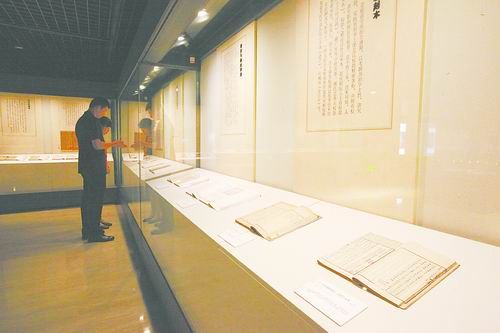



































.jpg)
.jpg)

.jpg)
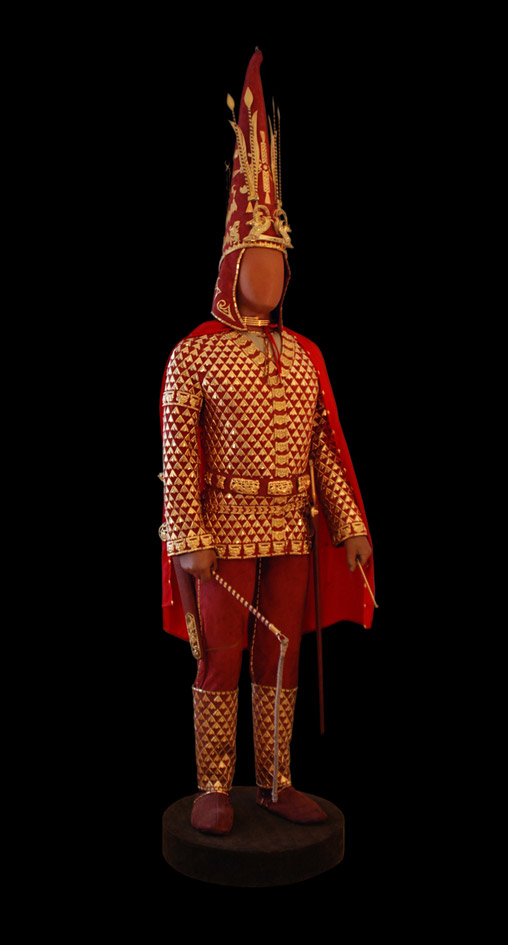
.jpg)
.jpg)
.jpg)
.jpg)
.jpg) Temple pendants. Photo courtesy of Krym Altynbekov
Temple pendants. Photo courtesy of Krym Altynbekov.jpg)
.jpg)
.jpg)
.jpg)
.jpg)
.jpg)
.jpg)
.jpg)
.jpg)
.jpg)
.jpg)
.jpg)
.jpg)
.jpg)
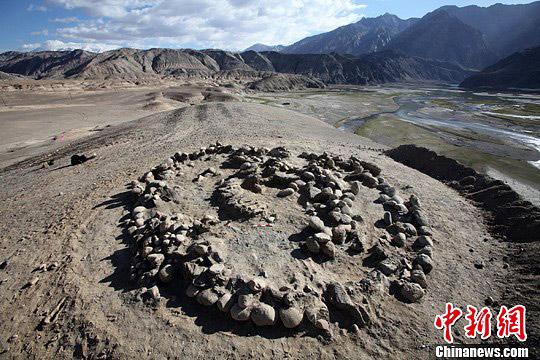



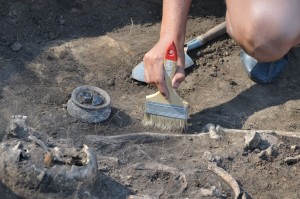


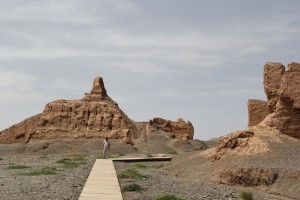
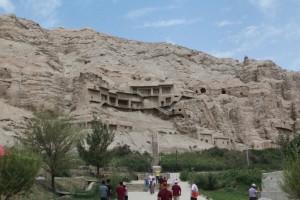 “I think it was a successful trip. I could only imagine how challenging it was for Ualikhanov to complete the expedition. It was snowing heavily when we were climbing up the mountains and as we know, the Ualikhanov expedition took place in the fall and the return trip was organised in March. Moreover, he was only 22 years old. Despite the young age he created a great treatise which is highly valued in the history of orientalism,” explained Iminov.
“I think it was a successful trip. I could only imagine how challenging it was for Ualikhanov to complete the expedition. It was snowing heavily when we were climbing up the mountains and as we know, the Ualikhanov expedition took place in the fall and the return trip was organised in March. Moreover, he was only 22 years old. Despite the young age he created a great treatise which is highly valued in the history of orientalism,” explained Iminov.